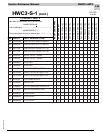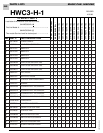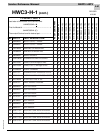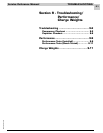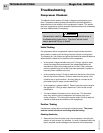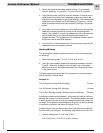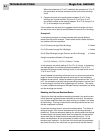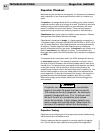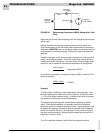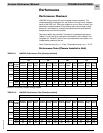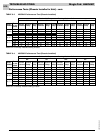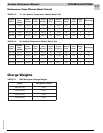
9-6
TROUBLESHOOTING Magic-Pak: HW/HWC
SRM-HW/HWC 8/99
Capacitor Checkout
Before starting the checkout of the capacitor, it is important to understand
what a capacitor is, how it works and what its function is in relation to a
motor.
A capacitor is a storage device similar to a battery, only unlike a battery
a capacitor wants to give up its energy all at once. This ability to store and
release energy is used to make motors run more efficiently, with more
power in a smaller size and to start easier. There are many types of
capacitors but they all serve one common purpose, to store electrons.
Capacitance refers to the capacitor’s ability to store electrons. Different
size capacitors hold different amounts of charge.
Capacitance is measured in farads. A 1-farad capacitor connected to a
1-volt power supply will store 6,280,000,000,000,000,000, or (6.28 x 10 to
the 18
th
power) electrons. Most capacitors store a much smaller quantity
of electrons. Smaller capacitors have different terms to indicate the
quantity of electrons that they can store. A picofarad is one trillionth of a
farad; a microfarad is one millionth of a farad. The microfarad is the
term most often used in the HVAC business, this is marked on a capacitor
as “MFD”.
The capacitor that is most often used in the HVAC business is known as
an electrolytic capacitor. The electrolytic capacitor is unique in that a
thin layer of oxide is formed on the aluminum sheets used to make up its
internal parts. The electrons that are supplied to the capacitor are stored
in this layer of oxide. But by doing this, nature is being forced to do
something that it doesn’t want to do. Nature likes to be in equilibrium. The
fact that nature prefers to return to a steady state is the idea behind the
use of capacitors. By storing a fixed amount of energy in the capacitor, it
provides the reserve of extra power needed to start and run a motor.
Without this energy source, motors would have to be much bigger and
more complex.
A capacitor can store a charge for a considerable
length of time after the power has been turned off.
This charge can be very dangerous. An electrolytic
capacitor charged with only 10 or 15 volts can melt
the tip of the end of a screwdriver when placed
across the terminals. A high voltage capacitor can
store a charge that could be lethal. Never touch the
terminals of a capacitor without first discharging it.
WARNING
Capacitor Testing
Capacitors are an integral part of the system and must be checked along
with the motor when a problem occurs.
Check to make sure that the capacitor is correctly rated for the applica-
tion. Confirm that the right capacitor is being used for the application.




